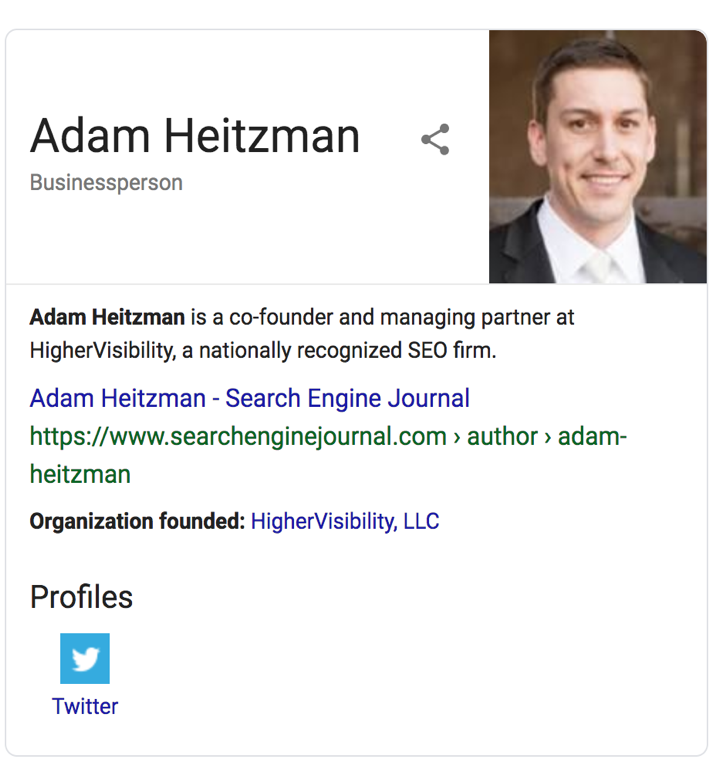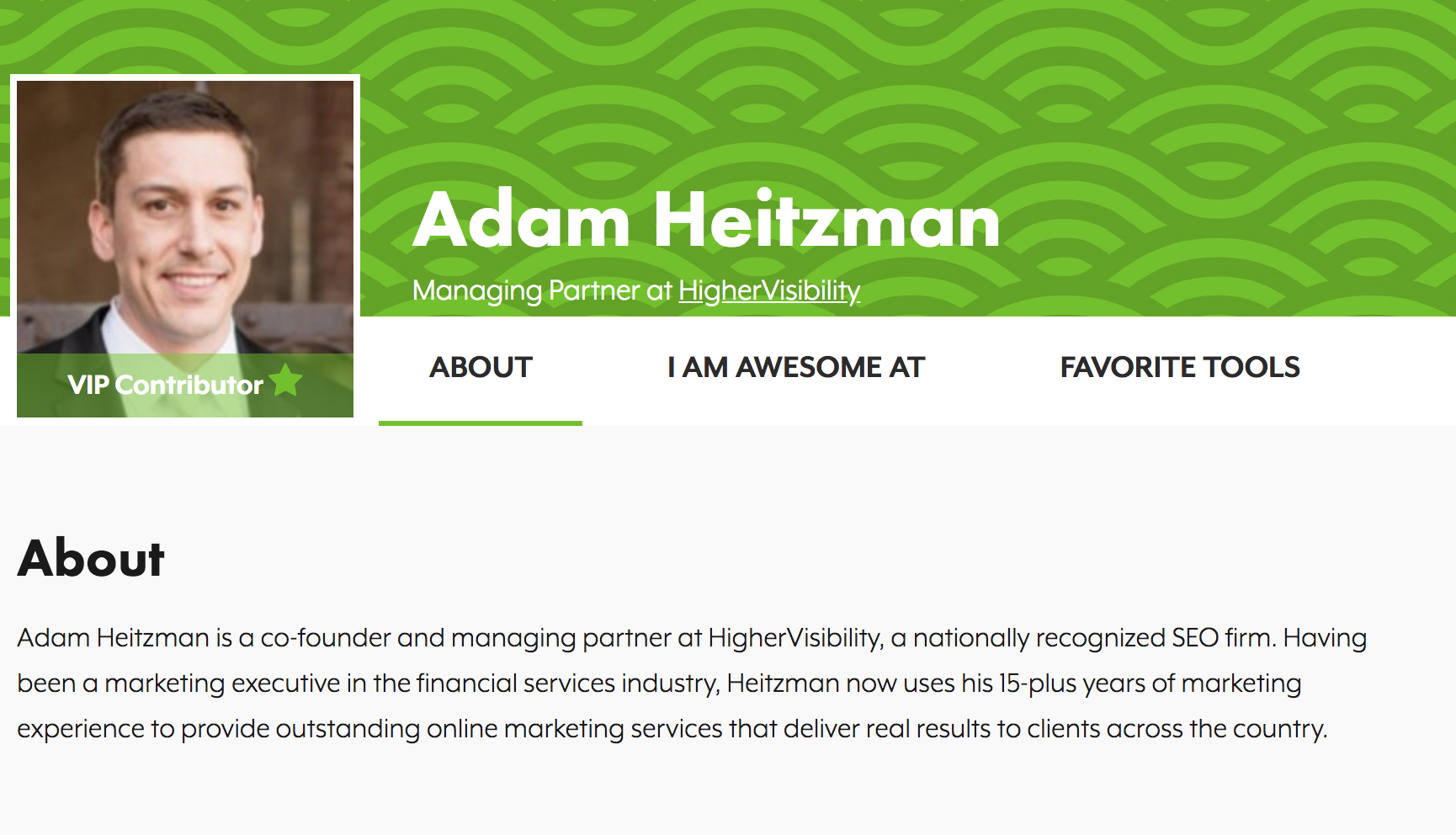

Here’s Your B2B Multichannel Full-Funnel Strategy In 5 Simple Steps
source link: https://www.searchenginejournal.com/b2b-full-funnel-marketing/446441/
Go to the source link to view the article. You can view the picture content, updated content and better typesetting reading experience. If the link is broken, please click the button below to view the snapshot at that time.

The Key To SEO Success: Effortless Expectation Setting [Podcast]
-
SHARES
-
READS
Podcast: Download
Subscribe: Apple Podcast | Google Podcasts | Spotify
Can’t you just call Google and tell them we want to be on the first page?
We just changed keyword strategies last week. Where is our uptick in traffic?
I’ve just read an article that says we should do x, y, z, and now I’m the expert. Sound familiar?
Whether you’re at an SEO agency or in-house, it can feel challenging to set and keep SEO expectations in check with reality.
Helping non-SEO pros understand your long plays is easier said than done – or is it?
Grant Simmons, Director of SEO at ClickFluent Consulting, joined me recently to discuss how to position yourself as the thought leader for your department, clients, and shareholders and stay positive.
There’s that disconnect between what agencies think about in-house people. –Grant Simmons, 10:49
Make sure expectations are met. That’s essentially the job, and you sell it. You make sure people understand what was sold, and you make sure they know what they’re going to get, and then you have to deliver it. And if you can’t deliver it, as I said before, communication is key, just letting them know when. –Grant Simmons, 7:15
There are a lot of folks I know that are independent SEOs or consultants that get a contract. They do the audit, and they’re done. There’s no value there. I mean, there’s some value that may be in the audit itself. Still, the ability to continuously keep communication going is gone. –Loren Baker, 8:14
[00:00] – Grant’s background in search marketing.
[05:00] – What Grant has learned on the agency side helped him in-house and vice versa.
[18:29] – Tips for anyone looking to transition from consultant or agency to in-house.
[21:41] – Why Grant hired multiple agencies & tips for handling them.
[26:02] – Opportunities in media & non-digital partnerships.
[28:32] – The example of haunted.com
[41:25] – How to assess the ROI from an agency.
[44:36] – Recommendations for agencies before signing on to projects.
[47:46] – How important is it to focus on local SEO?
[50:00] – Does Grant believe in pilot programs or Requests For Proposals (RFP)?
[59:29] – Grant’s favorite acronym.
[1:04:48] – Words of wisdom to anyone in the job market.
Grow Your Business With Vetted Freelancers Today
Fiverr Business gives your team the tools to collaborate and delegate with the world's largest selection of talented freelancers for any need.
I’d be really rich if I were paid a million dollars for my million-dollar ideas. So your idea is only worth the time coming up with that. –Grant Simmons, 55:32
If you are in-house, listen to your agency. If you’re an agency, do what’s best for your client, and if that means that you can’t implement it as you said, you just tell them to know you’re not going to. –Grant Simmons, 37:53
Empowering your clients to understand what should be prioritized and how that project has come about is from understanding their expectations. It means tailoring what you pitch to them to ensure that it aligns and letting them choose from ideas prioritized toward the outcomes they want. The outcomes they can justify internally to give you more work. It’s the great thing about being an SEO, and you don’t have to understand your client’s business 100%; you just have to understand what your client needs from SEO for that business. –Grant Simmons, 38:32
For more content like this, subscribe to our YouTube channel: https://www.youtube.com/user/searchenginejournal
Connect with Grant Simmons:
Grant’s expertise in SEO is unparalleled. He has an extensive background that includes roles with major companies like Clickfluent and Homes.
Throughout his 35-year career in marketing, Grant has focused on digital channels and collaborative SEO. His performance-based successes allow him to work with local companies and global ones for both small businesses looking at optimization needs and large corporations that need assistance managing their search engine rankings.
He also describes himself as an ex-pat with a funny accent.
Connect with Grant on LinkedIn: https://www.linkedin.com/in/simmonet/
Follow him on Twitter: https://twitter.com/simmonet
Connect with Loren Baker, Founder of Search Engine Journal:
Follow him on Twitter: https://www.twitter.com/lorenbaker
Connect with him on LinkedIn: https://www.linkedin.com/in/lorenbaker
Subscribe to SEJ
Get our daily newsletter from SEJ's Founder Loren Baker about the latest news in the industry!
Loren Baker
Loren Baker is the Founder of SEJ, an Advisor at Alpha Brand Media and runs Foundation Digital, a digital marketing ... [Read full bio]
- Suggested Articles
-
SHARES
-
READS

If you are reading this article, it is almost certain that you have been bombarded with the term personal branding and its relevance in the world of business.
You may think it is some new fad or a figment of the imagination of the marketing gurus.
But, believe it or not, personal branding is here to stay and will only become stronger with time.
So, what is personal branding, and why is it so important? Let’s find out.
What Is Personal Branding?
Personal branding is the process of creating a brand identity for a person or a company. As the name suggests, this is a brand for you or your business.
Essentially, it is how you project your brand and its values to the world and ensure that your target audience knows who you are, what you stand for, and why it’s worth choosing you over your competitors.
Personal branding is not just about marketing but about being your marketer. It is about standing for yourself and your business to command respect and confidence from your peers and customers.
The word “branding” can have a negative connotation when used in the context of businesses.
However, applying the correct principles and strategies will help you create a brand identity for your business and help you stand out from your competition.

Why Is Personal Branding Important?
In an era where people’s attention spans are getting shorter by the minute, the need to make an impression is more important than ever. And the best way to do this is by creating a solid and memorable brand identity.
Unfortunately, most business owners do not realize the importance of personal branding because they think it’s a lot of extra work.
However, the truth is that if you want to create a successful business, you must create a successful brand.
People who know you and your business will trust you more and will buy more products and services from you.
4 Reasons For Personal Branding
1. Helps One Stand Out From The Crowd
It is more important than ever to have a strong personal brand in today’s competitive job market.
A personal brand results from what others think and say about you when you’re not in the room. It is your reputation, and it can make or break your career.
So, why is personal branding so important?
For starters, it helps you stand out from the crowd.
In a world where everyone has a degree, employers are looking for candidates with something extra that makes them unique.
By developing a solid personal brand, you can make yourself the one they remember.
In addition, personal branding can help you command a higher salary.
There are many ways to develop a personal brand, but it starts with knowing who you are and what you want to be known for.
By taking the time to define your brand, you can set yourself up for success in your career and beyond.
2. Leads To Opportunity
We live in a competitive world where everyone vies for the same jobs, clients, and opportunities.
To stand out from the crowd, it’s essential to have a strong personal brand.
A personal brand is the unique combination of skills and experiences that make you who you are. It’s what makes you unique and sets you apart from everyone else.
By developing a personal brand, you’re giving yourself a competitive advantage.
People will remember you and your brand when they look for someone with your particular skills and expertise.
In addition, a strong personal brand can lead to new opportunities. When people see that you’re an expert in your field, they’ll be more likely to give you opportunities to collaborate or work on new projects.
So, if you’re looking to get ahead, start by working on your brand.
3. Your Audience Will Trust You More
Personal branding is the process of creating an identity for yourself as an individual or business. This involves developing a well-defined and consistent look, message, and presence online and offline.
There are many psychology-based reasons why you might want to work on your personal brand.
For one thing, it can help you build trust with your audience.
When people feel like they know who you are and what you stand for, they’re more likely to trust you. That’s because they feel like they have a relationship with you.
They know what to expect from you and that you’re an authority in your field.
Personal branding can also help you stand out from the crowd. In a world where everyone tries to get noticed, having a strong personal brand can make all the difference.
Finally, personal branding can help you attract opportunities.
When employers or clients see you have a strong personal brand, they’ll be more likely to consider you for their next project or job opening.
So, if you’re looking to build trust, attract opportunities, or stand out from the crowd, personal branding could be the answer.
4. People Will Always Screen You Online

In the digital age, personal branding has become increasingly important.
With social media and Google, it’s easy for anyone to find out information about you with just a few clicks. As a result, it’s essential to be aware of how you are presented online.
Personal branding can help you control the narrative about yourself and introduce yourself in the best light possible. It’s also a way to stand out from the competition.
In a world where everyone has a website and an online presence, personal branding can help you make yours stand out from the rest.
Personal branding can also help you build trust with potential customers and clients.
If they can see that you’re an expert in your field and have a solid personal brand, they’ll be more likely to do business with you.
Therefore, personal branding is essential for anyone who wants to succeed in today’s digital world.
How To Get Started Developing Your Brand
One good place to start is by cleaning up your social media accounts. You can control what your reputation is online, and so you don’t want anything you post on social media to negatively impact your presence.
Another positive place to begin would be to create a personal website.
Use your website not only to build your brand but to add value to your audience. This is your platform to showcase your skills and experience, and also to share valuable advice with your audience.
Create a logo and theme for yourself, and keep it consistent throughout all your social media profiles.
Define who your audience is and devise a content strategy with them in mind.
Publish compelling content that will draw in your audience and keep them coming back for more because your content adds value to their lives.
Consider creating specialized, personal content that you can give your audience in exchange for their email address; this is a great way to build your email list.
Final Words
A business is nothing without a personal brand behind it.
However, this does not mean you must forsake your business for your brand. Instead, it would be best to have a clear and purposeful strategy for the two.
Personal branding can only be successful if backed by a strong business strategy.
If your plan is weak, your brand is already defeated before it has even begun.
When you integrate your business and personal brands, you have a powerful branding combination that can help you reach your goals faster and easier.
More Resources:
Featured Image: Roman Samborskyi/Shutterstock
-
SHARES
-
READS

Some users may be ready to buy while others need more information or prefer to browse and compare sites. Dynamic content allows you to reach all those people in real-time.
But what is it, and where does it fit in your marketing mix?
Dynamic content is content on a webpage, email, or ad that changes based on a user’s behavior.
Using a content management system (CMS), you can predefine user behaviors that will signal the content to adjust.
These user behaviors include:
- Buying behavior.
- Pages visited.
- Events visited.
- Location data.
- Customer lifecycle.
- Time spent on the site.
- Buyer personas.
- Engagement metrics.
The CMS then matches user behavior to the appropriate content.
Then, as users engage with your site or other marketing assets, the CMS triggers relevant content to drive them down the buyer’s funnel.
A typical example of dynamic content is online retail sites. Users see recommended products, emails about abandoned carts, or ads for relevant products.
Dynamic Content vs. Static Content
Static content is the opposite of dynamic content: these are the website pages that stay the same, no matter who views them.
Specifically, dynamic content:
- Can be personalized.
- Is database-driven.
- Is a more user-friendly experience.
On the other hand, static content:
- Is stored on HTML files.
- Doesn’t change or recognize behavior.
- Doesn’t take long to create.
For smaller websites, like portfolios, it may be beneficial to use static pages because there is less content for the user to sift through.
Additionally, many website editors use dynamic and static content simultaneously.
For example, their homepage and blog could be dynamic, but their pricing page is static since that information never changes.
Benefits Of Dynamic Content
Dynamic content can provide valuable information to site editors based on user behavior. Some benefits include:
- A personalized experience: By creating a customized experience for each type of customer, you can help build trust and relevancy.
- Guided buyer’s journey: Dynamic content can help guide users through the buyer’s funnel organically since they have the content they need to make a buying decision.
- Relevancy: Since users are served relevant content, dynamic content reduces the bounce rate.
- Automatic: Once you set up dynamic content, you do not need to monitor it.
- Engagement: User preferences are loaded once the site is revisited, which creates a faster experience for the user.
Additionally, customers respond well to dynamic content. Some statistics include:
- Emails with personalized subject lines are 26% more likely to be opened.
- 80% of consumers are more likely to do business with a company that offers personalized experiences.
- 52% of customers expect personalized offers.
Dynamic Content Examples
As an active internet user, you’ve encountered websites or other dynamic types of content.
Common examples of dynamic content include:
- Personalized email subject lines.
- Recommended products on ecommerce sites.
- Ads promoting products you were previously browsing.
- Special prices based on location.
- Abandoned cart emails.
When marketers use content like the examples above, they gather valuable pieces of information, such as:
- How many times does a user visit a website?
- What pages do users see, and how long do they stay?
- What products have users previously viewed or bought?
- What keywords brought the user to a website?
This information can help marketers provide a more customized experience for users.
Dynamic Content Strategies
Like all marketing strategies, dynamic content should have a purpose on your site.
Before you implement any dynamic content, you’ll want to ask how it will help customers navigate your site. Consider questions such as:
- What am I trying to get the customer to do?
- What type of content will be most helpful?
- What path do I want the customer to take?
- How does the customer interact with my brand (i.e., social media, search, email)?
These questions can help guide a more meaningful and purposeful strategy to create a better customer experience.
Special Offerings
You can use dynamic content to serve new offerings with downloadable offers.
For example, you have an eBook download that you’ve offered to customers.
Dynamic triggers can suggest an alternate offering if they’ve already downloaded the eBook.
Additionally, you can provide different form fields to other customers to gather more information. You can use this information to understand what offers to deliver.
Guide People Down The Funnel
As marketers, we must ensure potential customers are getting the necessary information to make a buying decision. Dynamic content can help.
Behavior from previous visits can ascertain a user’s intention and point to content that can guide them toward a buying decision.
An excellent example of this is an email nurturing campaign.
These campaigns are based on content the user previously visited.
Then, marketers send related content to the user, hoping it will help them make a purchase decision.
Give More Access To Repeat Customers
Do you have numerous amounts of content to give, but it’s hidden behind a form?
While this is a great lead generation tactic, you may see repeat customers filling out forms repeatedly to gain access.
However, you have all their information if they’ve already filled out a form.
Instead of making your loyal customers fill out endless forms, you can use dynamic content to recognize repeat customers.
This action can help them bypass the form and get straight to the content.
Provide Different Content
Dynamic content can help you remain relevant to many different customers based on location and need.
For instance, if you are a clothing website, you can create other images and page content that speaks to a customer in a high desert area while also serving content to a customer in a much colder climate.
Additionally, if you have a blog, you can serve more relevant articles to the user based on previous data.
For example, say a user has been looking at blogs concerning link building.
Dynamic content can use that data to serve them more link-building topics the next time they visit the blog.
Serve Targeted Ads
Some ads follow you around. This is another form of dynamic content.
These ads use your search behavior to serve users relevant products.
You can also use these targeted ads for downloadables, ebooks, event reminders, or other demographics.
Dynamic content can help you uncover multitudes of information about your customers.
However, more importantly, it can create a custom experience for users that keeps relevant content in front of them.
This strategy creates a more personalized and tailored web experience to increase repeat customers.
More resources:
Featured Image: Roman Samborskyi/Shutterstock
Recommend
-
 34
34
MyStoreFeed - Multichannel ecommerce feed platform - NEXT
-
 7
7
Simple Stupid Funnel Algorithm
-
 6
6
Search Engine Land » Channel » Content...
-
 2
2
Omnichannel vs multichannel: what’s the difference and which is best for retail success?May 23rd 2022E-commerce
-
 2
2
Michael Ernzerhoff January 12, 2016...
-
 3
3
M2E CloudMultichannel listing, inventory & order management platformM2E Cloud is a multifunctional platform for e-commerce sellers. It allows easily integrate Shopify & BigCommerc...
-
 4
4
...
-
 1
1
Marketing relies heavily on the marketing funnel concept, a tool essential for visualizing and planning our strategies. When used correctly, it can greatly benefit your marketing efforts, particularly in
-
 12
12
Discover how strategically integrating SEO into multichannel marketing builds brand visibility and delivers a seamless customer experience.
About Joyk
Aggregate valuable and interesting links.
Joyk means Joy of geeK
